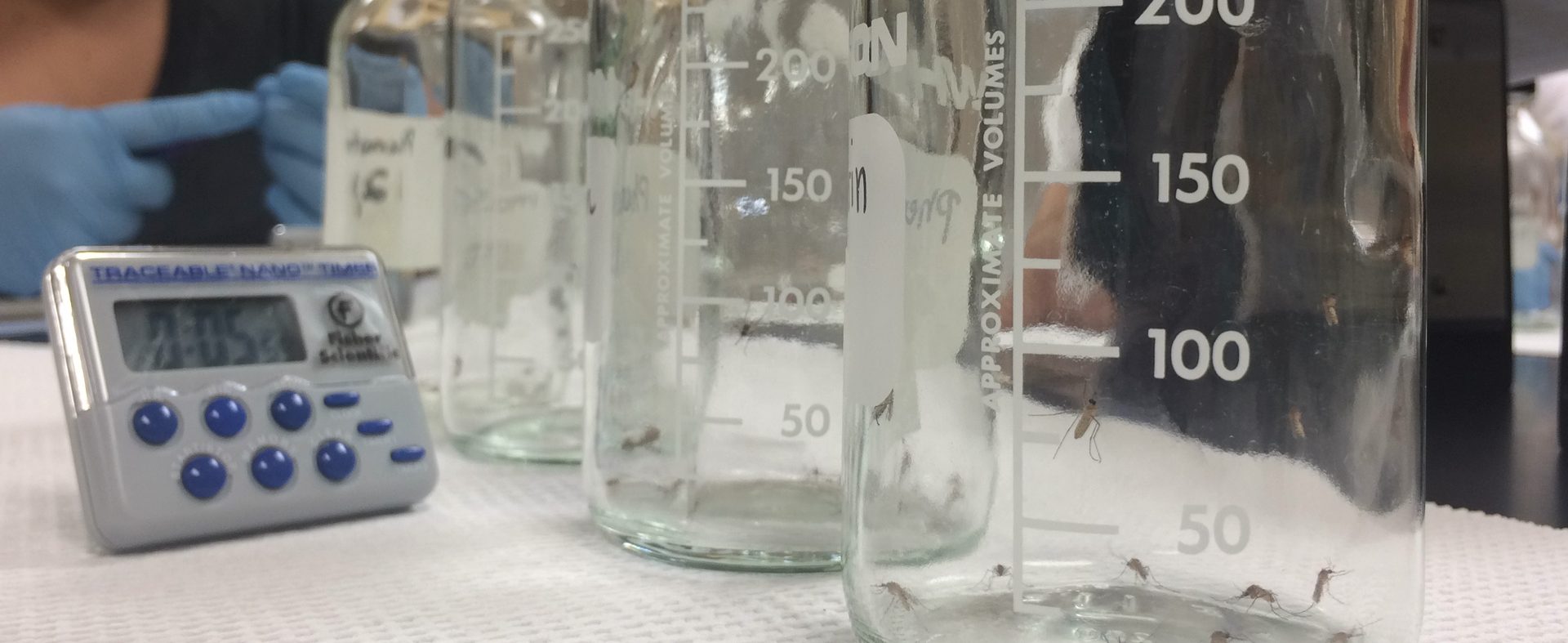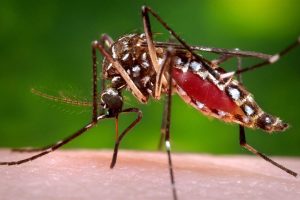
Richards SL, Balanay JG, Fields M* and Vandock K (2017). Baseline Insecticide Susceptibility Screening Against Six Active Ingredients for Culex and Aedes (Diptera: Culicidae) Mosquitoes in the United States. Journal of Medical Entomology 54(3): 682-695.
Abstract
Mosquitoes may develop resistance to insecticide active ingredients (AI). Thus, mosquitoes should be tested for resistance to confirm efficacy of insecticide-based control, inform management decisions, and protect public and environmental health. Our objectives were to determine a baseline of resistance for six AIs used in mosquito control in the United States to assess how resistance differs between mosquito collection location, AI, and mosquito species (container-ovipositing Aedes and Culex that may oviposit in containers or other sources). Field-collected eggs from 26 mosquito populations of five different species or hybrid species (Aedes albopictus Say, Aedes triseriatus Say, Culex pipiens L., Culex quinquefasciatus Say, Culex pipiens/quinquefasciatus) were obtained from four regions across the United States. Centers for Disease Control and Prevention bottle bioassays were used to determine baseline resistance and susceptibility status for six AIs (bifenthrin, deltamethrin, etofenprox, malathion, permethrin, and phenothrin). World Health Organization guidelines were used to classify mosquitoes as susceptible (98–100% mortality at diagnostic time [DT]), possibly resistant (80–97% mortality at DT), or resistant (<80% mortality at DT). Aedes spp. mosquitoes were less likely to exhibit resistance, compared with Culex spp. mosquitoes. A high degree of resistance to etofenprox and malathion was observed (4–26-fold greater resistance to these two AIs compared with the other examined AIs). Baseline data on resistance and susceptibility for mosquitoes exposed to commonly used insecticides may help us evaluate resistance trends and highlight the
importance of assessing local resistance trends before insecticide-based control measures are implemented.
*Melinda Fields is a 2015 graduate of our BS Environmental Health program.
NOTE: An article in Entomology Today published on March 9, 2017 highlighted this study when it was made available as an advance article.




